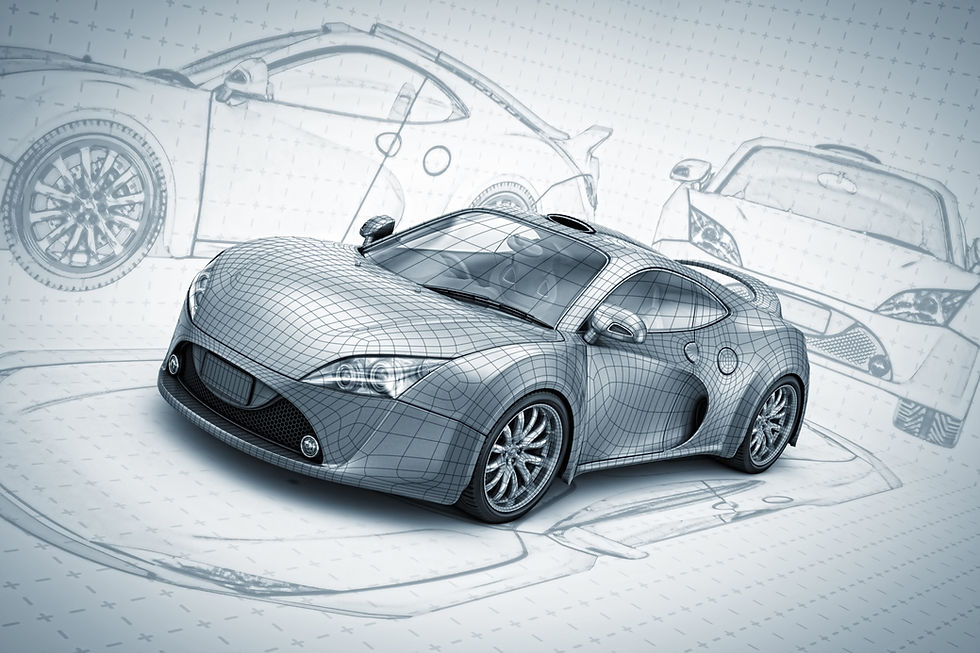Two million vehicle production lost in 2022 due to war in Ukraine
- Tamas Rozsa
- Apr 19, 2022
- 3 min read
Suppliers in Hungary to gain new orders
The COVID-19 pandemic set back European vehicle production by 25% in 2020 which, despite car buyer demand returning, stayed on that depressed level and could not recover in 2021 due to the chip shortage and in 2022 due to the war in Ukraine. Top Tier Consultants projects two million lost production yet again in 2022 in the Pan-European region.

The European automotive supply chain as a whole is working on replacing the production of parts in Ukraine, a process that will also entail a short-term increase in the volume of Hungarian suppliers, the managing director of Top Tier Consultants told VG. Tamás Rózsa pointed out that the automotive industry is sensitive to the fact that certain product groups - which rely on cheap Ukrainian labor - are currently not available. One of the most apparent of these is the cable wiring, the production of which is extremely labor-intensive but requires little specialized knowledge. (For similar reasons, the production capacity of Lear in Hungary was also cut in 2019 and then relocated to Ukraine.)
However, a short-term shortage of these commodities has serious consequences and has led to car manufacturers stopping production in March 2022. The necessary measure was therefore to relocate production, which in the case of Hungary (or possibly Romania or Serbia) does not cause technological problems, but is time consuming and disrupts the production of car assembly plants. The expert also pointed out that there is a high degree of uncertainty in the industry's forecasts due to the outcome of the war in Ukraine. Therefore, several scenarios are on the table. The baseline scenario assumes a cessation of war and no escalation. If this happens, only 2022 will bring a downturn - similar to 2020 and 2021 - but by 2024 the European market could reach 2019 levels.
In this case, the Hungarian supplier base is expected to grow for two main reasons. "Firstly, to reduce the risks already mentioned, parts will have to be manufactured inside the EU. Second, because the lost production of the last two years has resulted in unsustainably low finished car inventories. As a result, when the crisis settles down, production volumes will exceed sales, further increasing the turnover of Hungarian suppliers," said Tamás Rózsa. He also said that the exposure of Hungarian car manufacturing capacities to the Russian or Ukrainian markets is minimal and their manufacturing risk is mainly macro. In the car sector, declining customer confidence, rising fuel prices and inflationary effects are dampening sales prospects, and thus production of domestic units is slowing down. From a supplier perspective, there is also few Hungarian players producing for the Russian market, except for a few well-defined niche companies such as RÁBA.
The Managing Director of Top Tier Consultants also pointed out that the chip shortage affecting the entire vehicle industry has left a total of 9 million cars not produced globally in 2021, of which 3.9 million cars were produced in Europe. Thus, although demand was already strong, the EU car market remained at the same level as a year earlier during the pandemic. However, while 99 percent of the 2020 drop was due to COVID, 89 percent of the 2021 production shortfall was due to a lack of chips, another 10 percent to a shortage of other parts and only 1 percent to the direct impact of the pandemic.
Even in early 2022, supply chains were expected to normalize and chip shortages to slowly recover. By mid-2023, Top Tier Consultants no longer expects a bottleneck on the raw material side in monthly sales. However, with the war in Ukraine that broke out at the end of February, it has become clear that this year's vehicle sales will not be materially higher than the last two years. The result is a two million unit drop in the pan-European region, including Ukraine and Russia. In the European market alone, mainly due to the macroeconomic environment, a shortfall of 900,000 units is expected, a drop of around 7 percent. "However, there is positive uncertainty that the chip volume freed up by the loss of production in the Russian market can mitigate the European shortage, and that European military spending will generate commercial vehicle orders, even if most of these will boost sales after 2022," Tamás Rózsa noted.







Comments